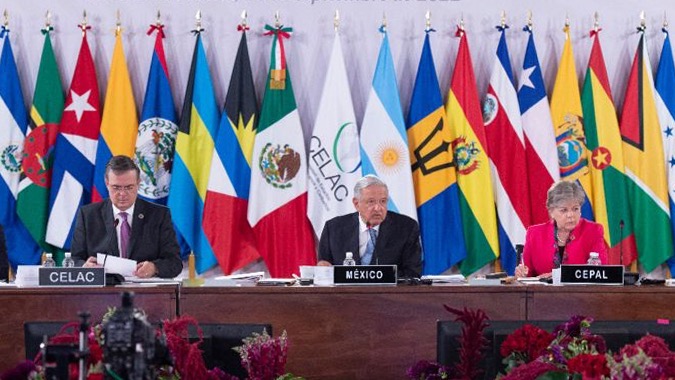Sustainable Tourism in South American Ecotourism Destinations: Balancing Growth and Preservation

Updated at: 2023-08-27 10:20:17 (2 years ago by Melkisedeck Leon Shine)
Sustainable Tourism in South American Ecotourism Destinations: Balancing Growth and Preservation
As the world becomes increasingly aware of the importance of environmental conservation, South American ecotourism destinations have emerged as key players in sustainable tourism. With their diverse natural landscapes and rich biodiversity, these destinations offer a unique opportunity to experience the wonders of nature while also contributing to their preservation. In this article, we will explore the contemporary issues in climate and environment in North and South America, and discuss how sustainable tourism can help address these challenges, promote unity, and inspire individuals to take action.
-
Climate Change: The impacts of climate change are being felt across the Americas, from melting glaciers in the Andes to rising sea levels along the coasts. Sustainable tourism practices such as promoting low-carbon transportation and energy-efficient accommodations can help reduce carbon emissions and mitigate the effects of climate change.
-
Deforestation: The Amazon rainforest, often referred to as the "lungs of the Earth," is under threat due to deforestation for agriculture and logging. By supporting ecotourism initiatives that prioritize forest conservation and sustainable resource management, travelers can contribute to the preservation of this vital ecosystem.
-
Biodiversity Loss: South America is home to some of the most biodiverse regions on the planet, but habitat destruction and wildlife trafficking pose significant threats to this rich heritage. By visiting protected areas and supporting local conservation projects, tourists can help protect endangered species and promote biodiversity conservation.
-
Water Scarcity: Many parts of North and South America are facing water scarcity issues, exacerbated by climate change and increasing demand. Sustainable tourism practices such as water conservation measures in hotels and responsible water usage by tourists can help alleviate this problem.
-
Waste Management: The growing tourism industry generates a significant amount of waste, putting immense pressure on local infrastructure and ecosystems. Travelers can make a difference by practicing responsible waste management, such as recycling and reducing plastic consumption, and supporting hotels and tour operators that prioritize sustainable waste practices.
-
Indigenous Rights: Indigenous communities in North and South America often face challenges related to land rights and cultural preservation. Sustainable tourism can provide economic opportunities for these communities while respecting their traditions and empowering them to be the custodians of their ancestral lands.
-
Coastal Erosion: Rising sea levels and extreme weather events are causing coastal erosion in many parts of the Americas, threatening beach ecosystems and coastal communities. Sustainable coastal tourism initiatives can raise awareness about this issue and support efforts to protect and restore vulnerable coastal areas.
-
Marine Conservation: The oceans surrounding North and South America are home to diverse marine life, but overfishing, pollution, and habitat destruction are depleting these resources. Responsible diving and snorkeling practices, as well as supporting marine conservation projects, can help safeguard marine ecosystems for future generations.
-
Sustainable Agriculture: Agriculture is a significant driver of deforestation and environmental degradation in many parts of the Americas. By supporting sustainable farming practices and promoting local, organic food options, travelers can contribute to a more sustainable food system and support local communities.
-
Renewable Energy: North and South America have immense renewable energy potential, from solar and wind power to geothermal and hydropower. Promoting and investing in renewable energy projects can help reduce reliance on fossil fuels and combat climate change.
-
National Park Preservation: National parks and protected areas play a crucial role in preserving fragile ecosystems and promoting biodiversity. By visiting and supporting these areas, tourists can contribute to their maintenance and conservation efforts.
-
Environmental Education: Raising awareness and promoting environmental education is essential for fostering a sustainable mindset. Travelers can seek out educational opportunities, such as guided tours and workshops, to learn more about local environmental issues and share this knowledge with others.
-
Community Engagement: Sustainable tourism should prioritize the involvement and empowerment of local communities. By supporting community-based tourism initiatives and engaging with local culture and traditions, travelers can contribute to the social and economic development of the region.
-
Responsible Wildlife Tourism: Wildlife tourism can have both positive and negative impacts on animal welfare. Responsible wildlife tourism practices, such as avoiding interactions with captive animals and supporting sanctuaries and rehabilitation centers, can ensure that animals are treated ethically and their natural habitats are protected.
-
Empowering the Next Generation: The future of sustainable tourism lies in the hands of the younger generation. By inspiring and empowering young people to become stewards of the environment through educational programs and volunteer opportunities, we can ensure a sustainable future for North and South America.
In conclusion, sustainable tourism in South American ecotourism destinations offers a unique opportunity to balance growth and preservation. By addressing contemporary issues in climate and environment, promoting unity, and inspiring individuals, we can create a more sustainable and resilient future for North and South America. Let us embrace these opportunities and work together to protect and conserve our beautiful continent. Share this article and join the movement for sustainable tourism in South America. #SustainableTourism #ClimateAction #NorthSouthAmericaUnity


